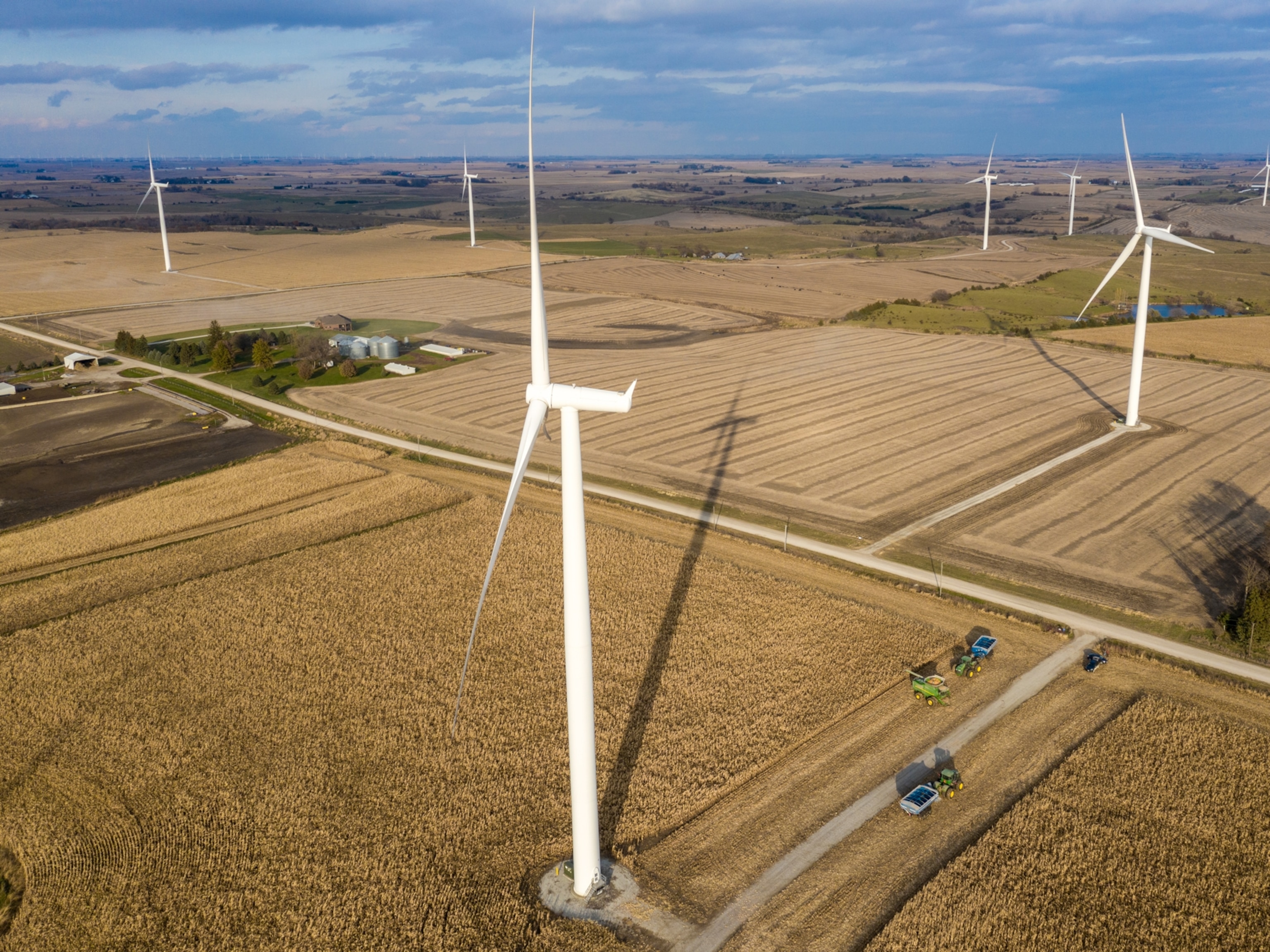
Biofuels and Climate Change: Pulpwood to the Rescue?
New study concludes that biofuels can be part of climate-energy solution.
The debate has been raging for years. Can biofuels, fuels derived from recently alive plant materials (or manure), serve as the fuel of choice to power our nation’s huge fleet of automobiles and trucks and power plants without adding to our climate change woes? (Take a quiz: “What You Don’t Know About Biofuel.”)
A Look at Biofuels in Principle and in Practice
In principle the answer should be yes. Because the carbon in plants is produced from taking carbon dioxide (CO2) out of the atmosphere via photosynthesis, burning those plant-derived fuels simply puts the same amount of CO2 back in the atmosphere — sort of like no harm, no foul. (See comprehensive coverage: “Biofuels at a Crossroads.”)
Burning fossil fuels, on the other hand — fuels derived from the remains of plants and animals that lived between a million and hundreds of millions of years ago (way before the dinosaurs, by the way) — adds carbon to the atmosphere, carbon that was buried long, long ago, and so results in a net gain of CO2, and in the climate change game, most definitely a foul.
But being a winner in principle and being a winner in practice are two different things. In the first place, growing the biofuel feedstock and converting it to a biofuel consumes energy and emits some CO2. This arises from the energy needed to manufacture fertilizers and fossil fuels used to plant, harvest and transport. But calculations indicate that even after taking that into account, biofuels do better than fossil fuels from a climate point of view. So all is copacetic on biofuels?
Enter the ‘Searchinger Hypothesis’
Not so fast, say a host of papers. (See here, here, here, here and this paper here on which I am a co-author.) Advancing an idea based on the so-called Searchinger Hypothesis after Tim Searchinger (a former colleague who is “generally … credited with reshaping the world debate on bioenergy”), these papers argue that, once one takes land conversion into account, the biofuels climate picture goes from a positive to a negative.
More specifically, the argument goes something like this: When we take crops normally used for food, and use them as feedstock for biofuels instead (e.g., corn ethanol or soybean biodiesel), that can create a food supply deficit. To make up for this deficit, farmers somewhere will cultivate more crops, and to cultivate more crops, the farmers must farm on land not currently under cultivation. And that conversion of land from non-agricultural to agricultural can effectively create carbon emissions.
For example, when a forest is cut down to grow those new crops, there are significant releases of carbon, carbon that would have otherwise been stored in the forest. Thus this scenario represents a heretofore unaccounted for flow of CO2 into the atmosphere (a case of indirect land use). Accounting for these emissions, the advancers of the Searchinger Hypothesis claim, tends to make biofuels no better than, or even worse than, just using fossil fuels.
How to Solve the Biofuel Conundrum?
Some have attempted to solve this conundrum by proposing to use only marginal lands to grow advanced biofuels — leaving prime agricultural land for food. Sounds good, but I’m not sure this will work — it’s simple economics. If farmers can earn more income by growing fuel than crops, it’s hard to believe they wouldn’t convert prime croplands to grow fuels. Certainly, as these headlines indicate, U.S. farmers in recent years have been producing more corn in response to the U.S. mandate for ethanol (except in 2012 because of the drought): “2007 Corn Crop a Record Breaker, USDA Reports,” “2009 Crop Year is One for the Record Books, USDA Reports” and “U.S. CORN ACREAGE IS UP IN 2011.” And here’s the latest corn report for 2013. (Not only has growing more corn affected food production, a recent report by The Associated Press found that “As farmers rushed to find new places to plant corn, they wiped out millions of acres of conservation land, destroyed habitat and polluted water supplies.”)
Of course this rush to corn ethanol in the United States is being driven by the ethanol mandates in the Energy Policy Act of 2005 and the Energy Independence and Security Act of 2007. Ironically, because demand for gasoline in the United States is dropping, there is no longer enough gasoline being used to consume all the ethanol produced to meet the mandate (when the ethanol content is limited to 10 percent). In response, EPA is now proposing to relax the ethanol mandate. (See related post: “U.S. Proposes First Reduction in Ethanol Mandate.”)
Rosy Biofuel Future Predicted
It would appear that our recent biofuel journey has been problematic. Disrupted food markets, concerns about emissions from land conversion, and mandates that are in search of demands. But a new report released by the nonprofit think tank Resources for the Future foresees a stronger future for biofuels. Specifically, Roger Sedjo and his co-authors conclude that, based on two modeled scenarios,
“industrial forests and supplemental dedicated fuelwood plantations … can economically produce large levels of biomass [to provide biofuels] without compromising crop production, thereby mitigating the land conversion and carbon emissions effects posited by the Searchinger Hypothesis.”
The authors’ conclusions are predicated on their argument that there are more than enough non-agricultural and marginal lands available to produce enough biomass to meet their modeled biofuel demand*, keeping the price for biomass feedstocks low enough to make it unprofitable for farmers to switch from growing food crops to growing biomass for biofuels. (See Sedjo and others discuss biofuels in this series of clips.)
A Linchpin to this Counterargument: Economically Viable Cellulosic Ethanol
A key and critical assumption underpinning the Sedjo et al. argument is that the technology for producing biofuels from cellulosic material (as opposed to sugars from crops like corn) will advance enough to make biofuels generated from cellulose economically viable. If this occurs, the models used by Sedjo et al. predict there would be large amounts of biomass from grasses and trees grown on marginal lands; this biomass along with biomass from the pulpwood sector could meet the demand for biofuels without driving land conversion.* (See related story: “Drop-In Biofuels Squeeze Gasoline from Plants.”)
Will cellulosic-based technologies be able to bring biofuels to the marketplace? It remains to be seen, but there are encouraging signs. At least two cellulosic ethanol plants are up and running in the United States with three more expected to come online in 2014. And while it remains to be seen if production can match this year’s EPA target of 6 million gallons [pdf], next year’s goal of 17 million gallons has been called “realistic.” ($ub req’ed)
So it may turn out, with cellulosic ethanol in play, that biofuels are preferable to fossil fuels. But I’ve got something that beats out both: Cars that drive with fewer gallons per mile and drivers that drive fewer miles. (Vote and comment: “Are Biofuels Worth the Investment?“)
____________
End Note
* The demand for biofuels modeled by the authors is significantly less than the cellulosic biofuel production specified in the Renewable Fuel Standard.
Post corrected 11/21/2013
The original version of the post neglected to mention that the demand modeled by Sedjo et al. is significantly less than the Renewable Fuel Standard specified in the Energy Independence and Security Act. Also left out were two of the primary sources of biomass for the paper’s scenarios (which, along with the biomass from marginal lands, which was mentioned, would be the means to meeting the demand specified in the paper): biomass derived from residues and the pulpwood sector.
You May Also Like
Go Further
Animals
- This ‘saber-toothed’ salmon wasn’t quite what we thoughtThis ‘saber-toothed’ salmon wasn’t quite what we thought
- Why this rhino-zebra friendship makes perfect senseWhy this rhino-zebra friendship makes perfect sense
- When did bioluminescence evolve? It’s older than we thought.When did bioluminescence evolve? It’s older than we thought.
- Soy, skim … spider. Are any of these technically milk?Soy, skim … spider. Are any of these technically milk?
- This pristine piece of the Amazon shows nature’s resilienceThis pristine piece of the Amazon shows nature’s resilience
Environment
- This pristine piece of the Amazon shows nature’s resilienceThis pristine piece of the Amazon shows nature’s resilience
- Listen to 30 years of climate change transformed into haunting musicListen to 30 years of climate change transformed into haunting music
- This ancient society tried to stop El Niño—with child sacrificeThis ancient society tried to stop El Niño—with child sacrifice
- U.S. plans to clean its drinking water. What does that mean?U.S. plans to clean its drinking water. What does that mean?
History & Culture
- Meet the original members of the tortured poets departmentMeet the original members of the tortured poets department
- Séances at the White House? Why these first ladies turned to the occultSéances at the White House? Why these first ladies turned to the occult
- Gambling is everywhere now. When is that a problem?Gambling is everywhere now. When is that a problem?
- Beauty is pain—at least it was in 17th-century SpainBeauty is pain—at least it was in 17th-century Spain
- The real spies who inspired ‘The Ministry of Ungentlemanly Warfare’The real spies who inspired ‘The Ministry of Ungentlemanly Warfare’
Science
- Here's how astronomers found one of the rarest phenomenons in spaceHere's how astronomers found one of the rarest phenomenons in space
- Not an extrovert or introvert? There’s a word for that.Not an extrovert or introvert? There’s a word for that.
- NASA has a plan to clean up space junk—but is going green enough?NASA has a plan to clean up space junk—but is going green enough?
- Soy, skim … spider. Are any of these technically milk?Soy, skim … spider. Are any of these technically milk?
- Can aspirin help protect against colorectal cancers?Can aspirin help protect against colorectal cancers?
Travel
- What it's like to hike the Camino del Mayab in MexicoWhat it's like to hike the Camino del Mayab in Mexico
- Is this small English town Yorkshire's culinary capital?Is this small English town Yorkshire's culinary capital?
- This chef is taking Indian cuisine in a bold new directionThis chef is taking Indian cuisine in a bold new direction
- Follow in the footsteps of Robin Hood in Sherwood ForestFollow in the footsteps of Robin Hood in Sherwood Forest







